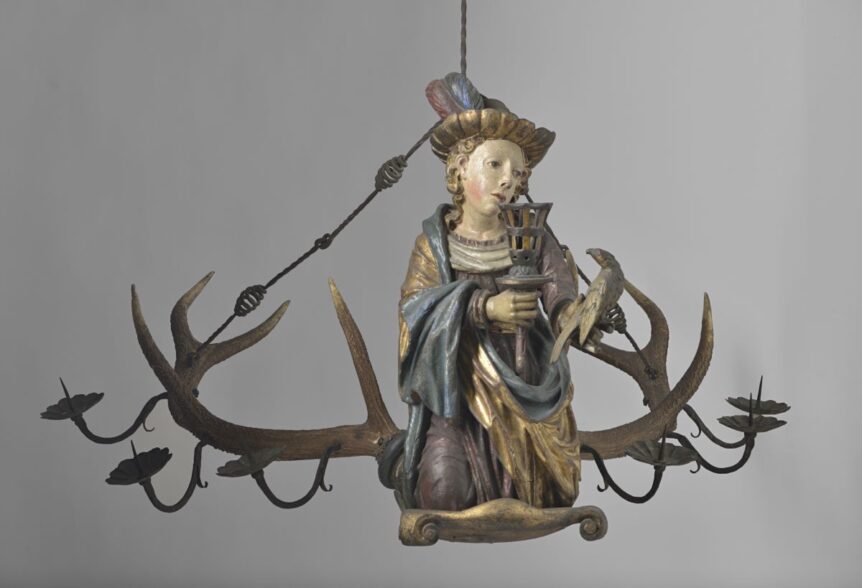
As the auction began, we were still pondering whether to bid on the chandelier. It was nothing like anything we’d ever brought into our workshop, our store, or our home. And yet, the strange-yet-sympathetic melding of antler and human, of fish and lamp, had caught our eye and held it. So here we were staring at our computer screen seriously considering spending what is, for us, a sizeable chunk of change for the privilege of working on it—and it needed work. “It is definitely a statement piece,” I said.
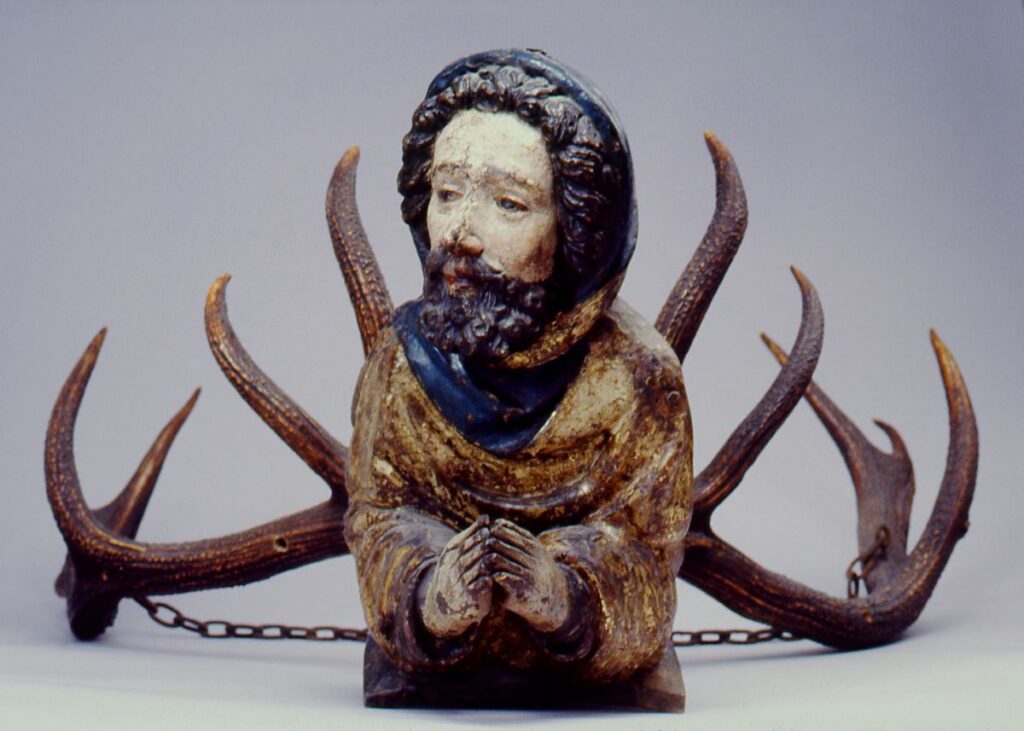
The chandelier, which was being offered by Public Sale in Hudson, New York, featured at its center a figure of a woman holding an armorial shield bearing the crest of the royal house of Wittelsbach, the ruling dynasty of the Kingdom of Bavaria from 1180 to 1918. From head to hips, the figure appeared to be that of a human woman, clothed in a flowing red dress and with a hood covering her head; but where the torso ended, the twisting serpentine mermaid tail began. From her back, two deer antlers sprouted like the wings of a wake trailing behind a ship. Each antler held two small candelabra-size sockets disguised to look like candles. This was a Lüsterweibchen.
The concept behind a Lüsterweibchen fixture, from the perspective of a lighting designer, is a bizarre one. The combination of antlers and carved wood statuary with vibrant paint and decorative chains sounds too Frankenstein-ish. But, when you see one of these pieces, particularly when you get to see one in person, the whole thing hits very differently. It’s a curio ripe for a Wunderkammer. Lüsterweibchen are made more beguiling for the obvious and undeniable skill that went into their crafting. It was the skillfulness that piqued our curiosity most.
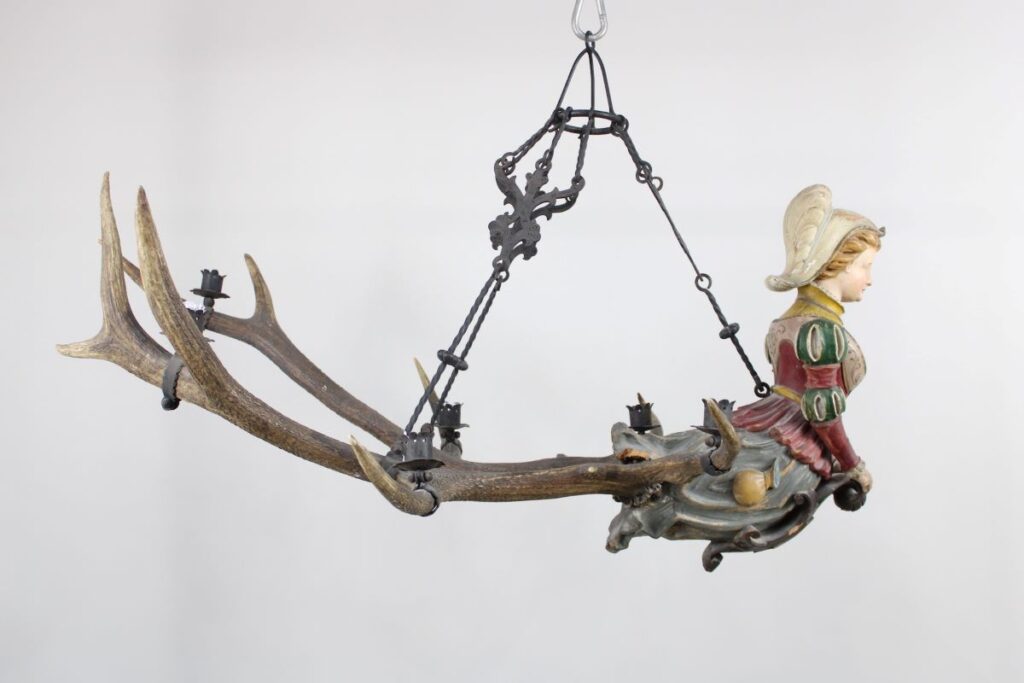
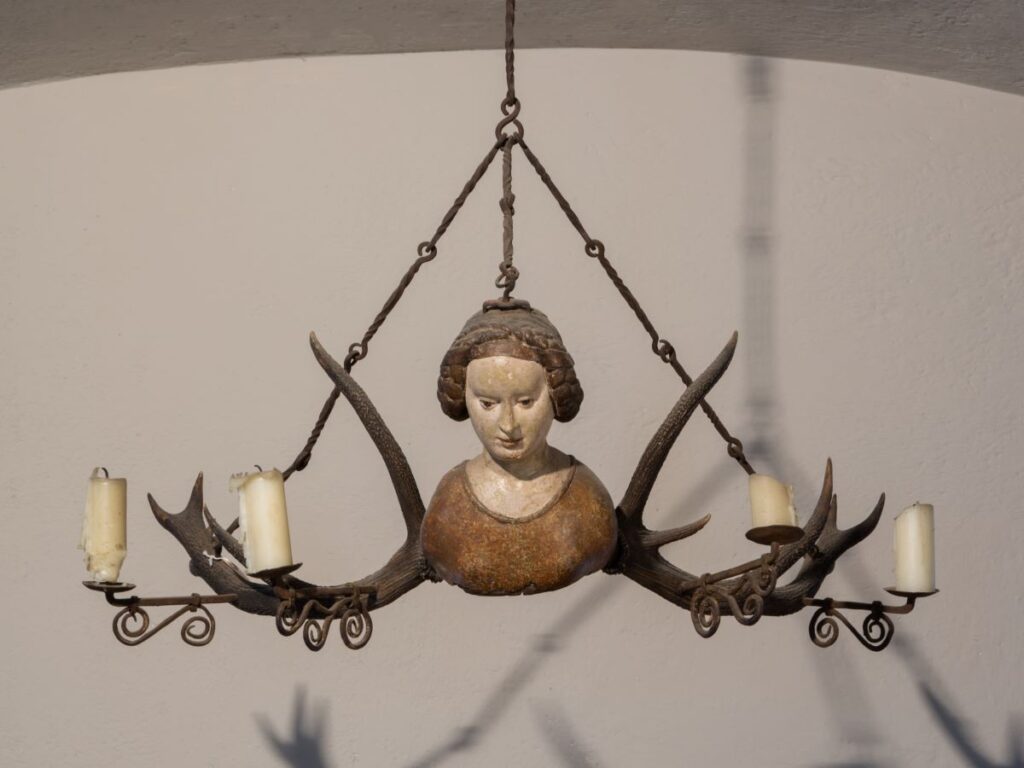
of Art, Cloisters Collection.
The term Lüsterweibchen refers to one style of Geweihleuchter, which is German for “antler chandelier.” When the lighting piece includes a female sculpture it’s a Lüsterweibchen or “little chandelier woman.” The term Lüstermännchen, or “little chandelier man,” is used when the carved figure is male—only a handful of these survive, however, compared to the larger number of female examples that survive.
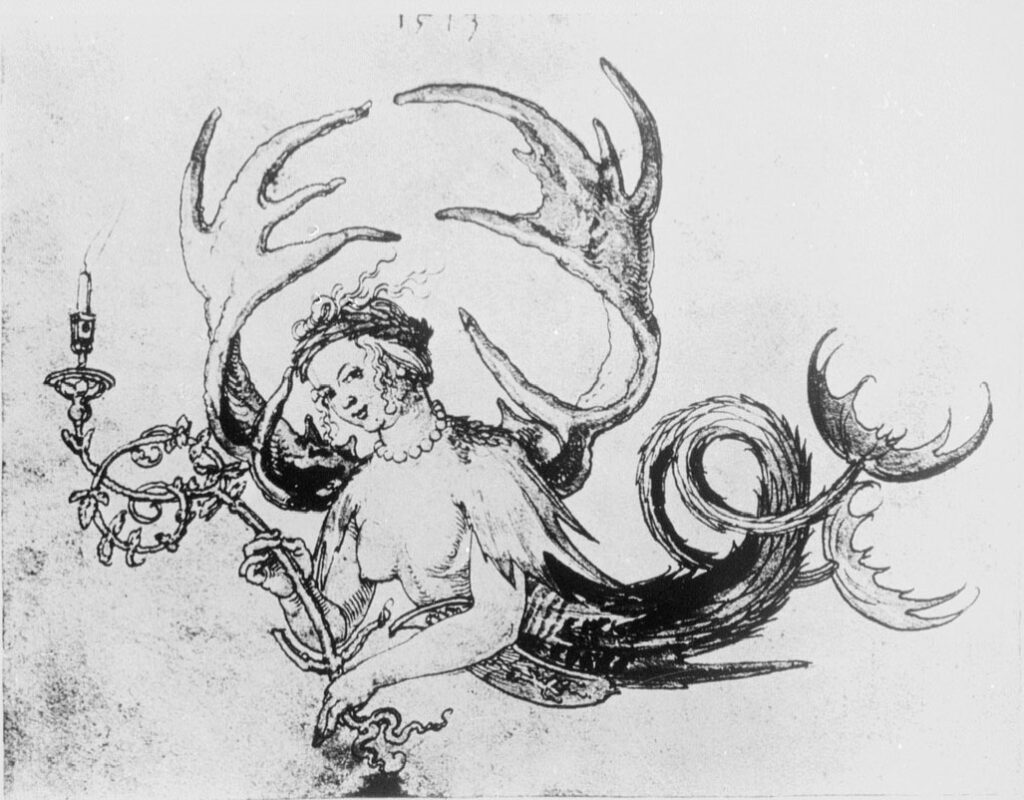
The statues of women make up both the most common examples and the earliest type known of the form. The oldest surviving Lüsterweibchen, in the Lemgo Municipal Museum, or Hexenbürgermeisterhaus, in Lemgo, Germany, has been dated to 1398, while the earliest written record of an antler chandelier dates to 1325. Early Lüsterweibchen always sport carvings of women and only of the head and shoulders. The extension of the statue to include the full torso first appears around 1500.
Lüsterweibchen were tremendously popular throughout Northern Europe for hundreds of years—from the late fourteenth century until the close of the seventeenth, with examples spread throughout what was then the Holy Roman Empire. Even the vaunted Albrecht Dürer designed a number of them in his short life, and most of the great German craftsmen of the period had several Geweihleuchter under their belts. The style experienced a small renaissance in the nineteenth century, and most of the pieces that appear on the market today, including the one we were considering bidding on, date from that period.
A number of theories have been put forward as to how the idea of combining a figural sculpture with antlers and sticking some lights on it came to be. In her essay “Trophäen und Mirabilien,” the Austrian curator and historian Margot Rauch hypothesizes that the style was rooted in an apotropaic hunting practice, with the hunter honoring the fallen animal by retaining certain body parts, such as antlers, and then by incorporating them into noteworthy and valued household items. Another theory, discussed by art historian Dagmar Preising, suggests a connection to Christian iconography dating back as early as the second century that employs a stag as a symbol of Christ. Early antler fixtures may have been created as a way of warding off bad spir- its, or hung with the hope of enjoying a sort of passive blessing or good luck. Frank Kammel, in his book Kunst in Erfurt, 1300–1360 (2000), discussed the use of antlers as indicative of hunting trophies in the familiar modern sense—as an attempt by the hunter to memorialize a testament to his prowess. Any, or all, possibilities could have led some medieval craftsman to combine antlers and a carved wooden bust into a design for a chandelier.
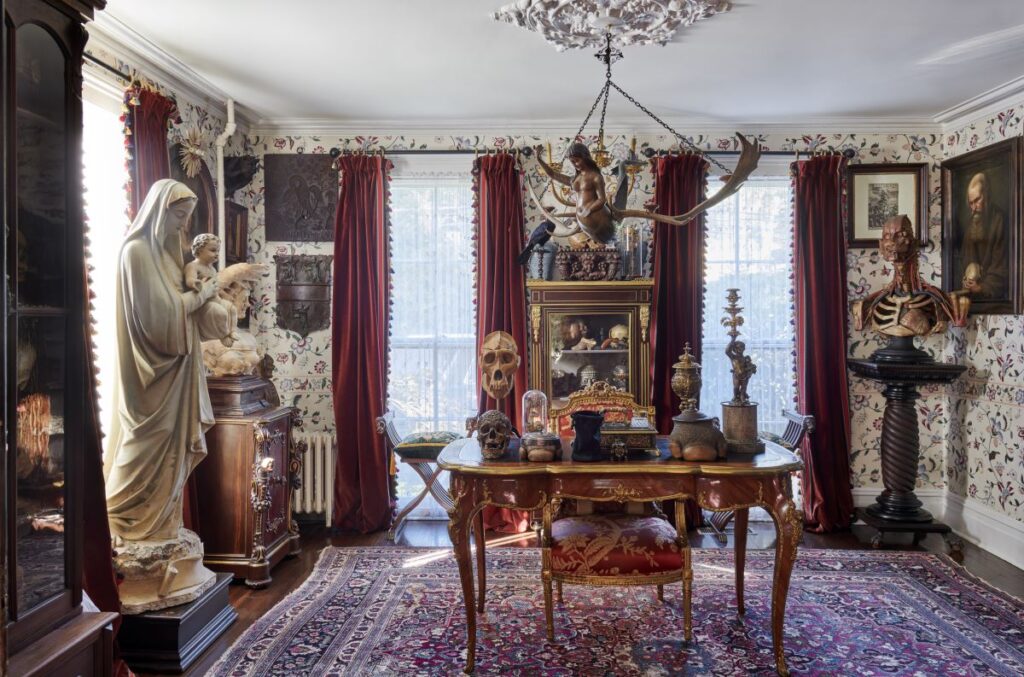

There were likely thousands of antler fixtures that dotted the buildings of early modern central Europe. Figural antler chandeliers were almost commonplace once upon a time, and when the nineteenth-century German rediscovery of the “Bavarian hunting lodge” aesthetic led to a revival of the style, it made the antler-lamp combination all but ubiquitous. By 1900, dozens of furnishing manufacturers had incorporated antler chandeliers into their offerings, including Eberhard Melches, Madel und Sohn, and Jacob Cristl.
Alas, twentieth-century tastes were not attuned to these delicate creations, which gathered dust in search of a buyer. In today’s more open-minded and eclectically inclined times, attitudes seem to have changed. When examples crop up on the market today, they can range in price from $1000 for pieces from the nineteenth-century revival work in need of restoration to upwards of $10,000, most often for older pieces. (A sixteenth-century example fetched $35,000 at a Cologne, Germany auction house in 2016.) A style of fixture that elicits curiosity, Lüsterweibchen that come onto the market are quickly bought up. We certainly felt that excitement when we saw our first one at auction and were unable to keep our fingers from hitting “bid.” After rewiring and slight, stabilizing repairs, the piece now stands out as the eye-catching centerpiece it was always meant to be.

